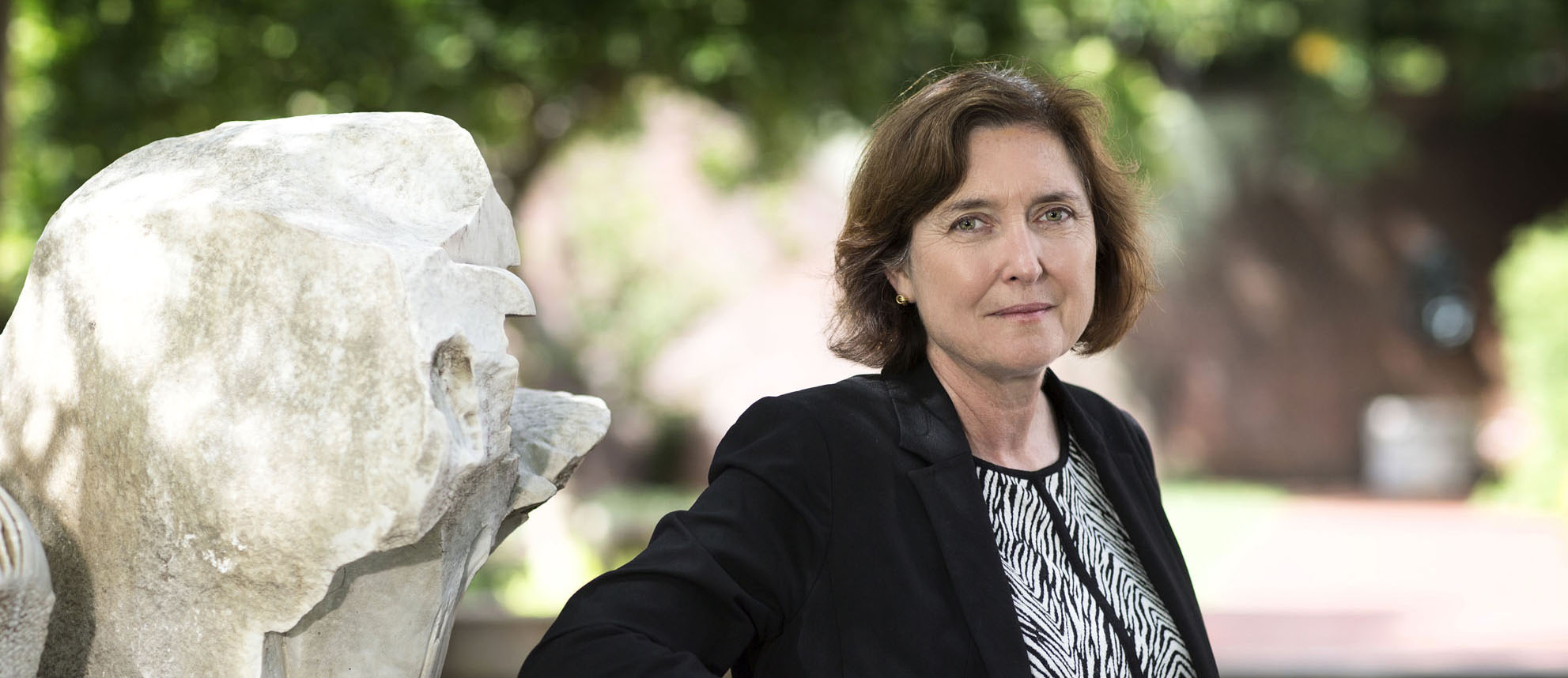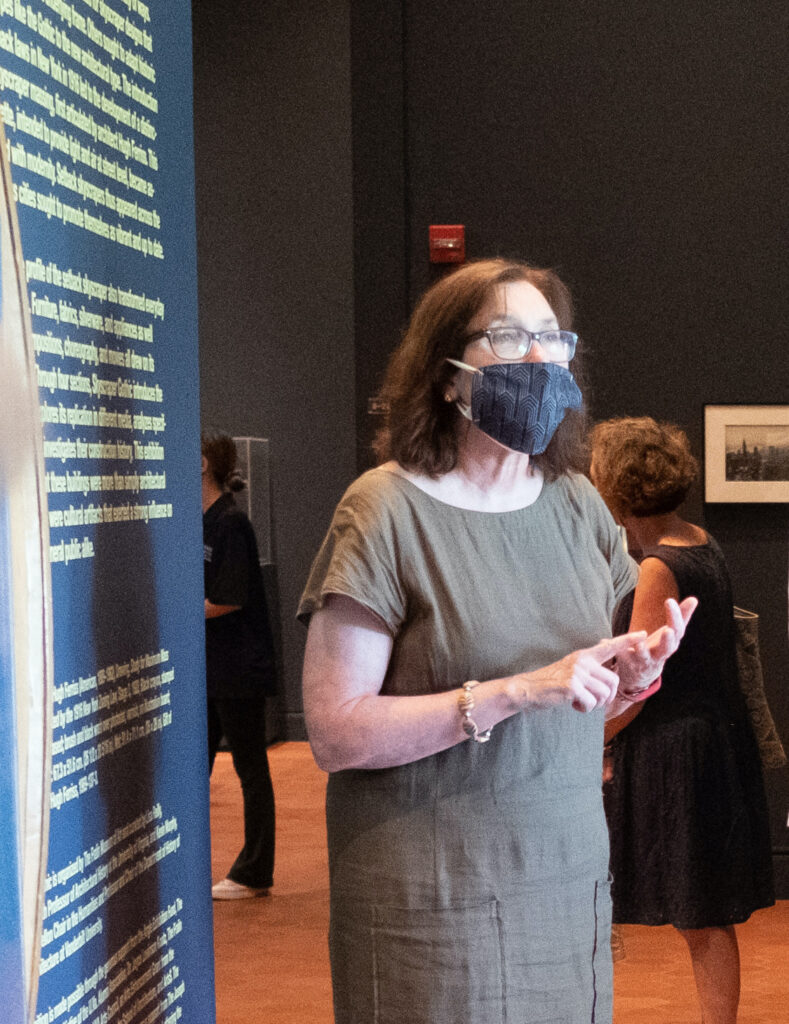
Writer and editorial consultant Margaret Hancock sat down with Lisa Reilly, Commonwealth Professor in Architectural History at the University of Virginia, to discuss the exhibition Skyscraper Gothic, currently on view at the Fralin Museum of Art.
Skyscraper Gothic is currently on view at the Fralin Museum of Art. What can a visitor look forward to experiencing?
The exhibition’s content came out of essays in which fellow professor Kevin D. Murphy and I address particular buildings. In doing the work, we saw how skyscrapers in the first three decades of the twentieth century served as an emblem of America and modernity. So the exhibition explores not only the architecture, but its infiltration in American culture and connection to modern society. This comes through in a range of objects and mediums including drawings, models, paintings, photographs, and more.
Which buildings demonstrate the Skyscraper Gothic style?
The “buildings” section of the exhibition (the other sections being an introduction, replication, and construction) focuses on New York City, Detroit, and Chicago. The Empire State Building, the Woolworth Building, the Union Trust (now Guardian) Building, and the Chicago Tribune Tower — all iconic, multistory buildings with defining Gothic elements — demonstrate the style and take center stage in the exhibition.
What (or who) else plays an important role?
The very first object in the show is a hand-carved logo for the Shaw-Walker Company — a piece of ephemera that demonstrates how skyscrapers influenced the furniture industry. There is also furniture from the “Skyscraper” series of Paul. T. Frankl, a punch bowl with a skyscraper engraving by Tiffany & Co., and even a sound recording of Skyscrapers: A Ballet of Modern American Life. So, the broad impact of the architecture on designers and their productions across industries is displayed.
The exhibition also features the construction worker as hero. The documentation and celebration of these men and their work at great heights (especially without any safety measures in place) is an essential piece of the story.
Is there a particular object in the exhibition that stands out for you?
Yes — a painting by the pioneer Amaza Lee Meredith. She is recognized as one of the first practicing black female architects and, while hailing from Virginia, spent much time in New York. The work is titled New York Skyline and illustrates multiple skyscrapers through vivid colors and a texturized surface; its significance stems from both the piece itself and the artist.

What might surprise a practicing architect viewing the exhibition?
The exhibition includes five architectural drawings of the Woolworth Building completed between 1910 and 1912 from the office of architect Cass Gilbert. They have never before been published or placed on view so this marks their debut. That — as well as the fact that they are superseded and demonstrate such a high level of hand-drawn detail in comparison to today’s computer renderings — will likely prove a surprise and a highlight for architects.
What were you most excited to uncover while curating the show?
After the pandemic restricted travel, we were no longer able to see objects in-person before securing them for the exhibition. When we unpacked the textile by Ruth Reeves titled Manhattan, it was larger and its visual details more defined than anticipated. This piece, which depicts women at a switchboard and typing amid stylized modern and architectural elements truly represents the shift in American living directly related to the skyscraper.
How did being a part of the University of Virginia contribute to Skyscraper Gothic?
This exhibition benefitted from a huge level of student involvement in everything from research to display. A design course offered through the Architecture School and open to all University students in spring 2020 focused on the exhibition and resulted in beautiful details the students completed with the Fralin’s preparator, down to podium displays notched with the steplike profile that defined Skyscraper Gothic style!
